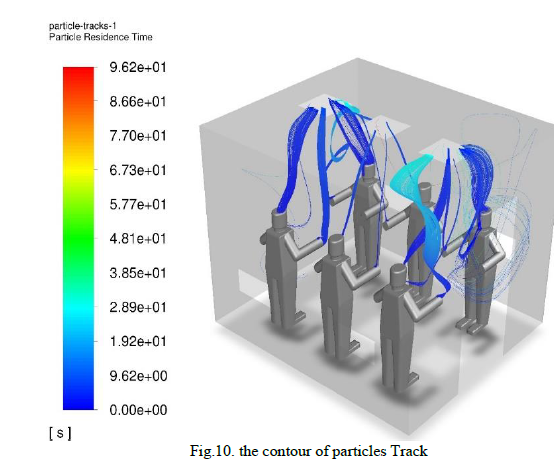Numerical simulation of particles distribution of environmental tobacco smoke and its concentration in the smoking room of Shiraz airport
From the Journal: Physics of Fluids

WASHINGTON, Oct. 29, 2024 – While many smoking rooms in U.S. airports have closed in recent years, they are still common in other airports around the world. These lounges can be ventilated, but how much does it actually help the dispersion of smoke?
Research published in Physics of Fluids, by AIP Publishing, shows that not all standing positions in airport smoking lounges are created equal.
Researchers from the University of Hormozgan in Iran studied nicotine particles in a simulated airport smoking room and found that the thermal environment and positioning of smokers influenced how particles settle in the room.
Additionally, smokers seated farther from ventilation inlets experienced the lowest levels of pollution in the room.
“We expected that people who are standing in the corners would report the same amount of particles settling on their body,” author Younes Bakhshan said. “But according to the numbers that we determined, the wave created by the ventilation in the room is not the same every time.”
The researchers created a smoking room using computational models and placed heated and unheated manikins in the room to simulate smokers. They also modeled the ventilation system with three exhaust air diffusers.
The manikin smokers “exhaled” cigarette smoke through their mouths and noses, and the flow of the particles was modeled and observed. They found that over time, as the concentration of particles decreases in the air, the particles settling on the smokers increases.
“According to the results, body heat causes more absorption of cigarette pollution,” Bakhshan said. “We suggest that if people have to smoke in the room, empty places are the best to choose.”
The results gave insight into improving ventilation in smoking lounges.
“According to previous research, displacement ventilation system is the best for a smoking room,” Bakhshan said. “But if we want to optimize the HVAC system, we suggest that the exhaust should be installed on the wall in addition to the vents placed on the ceiling.”
Next, the researchers want to take a step beyond measuring particle dispersion to particle reduction.
“We believe that smokers who go into the smoking room for the sake of others’ health should be also protected from the harmful effects of secondhand smoke,” Bakhshan said.
###
Article Title
Authors
Elaheh Mohammadpoor and Younes Bakhshan
Author Affiliations
University of Hormozgan
